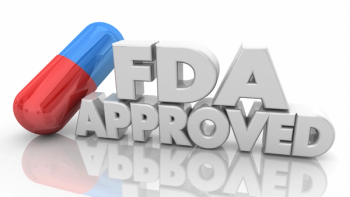
Paul Ryan and Pharma: The Inside Story
Well, we certainly have a presidential campaign now, don’t we? Good grief. Since Rep. Paul Ryan was named the Republican VP candidate last week.
Well, we certainly have a presidential campaign now, don’t we? Good grief. Since Rep. Paul Ryan was named the Republican VP candidate last week, all hell has broken loose! Given the intensity of the last few days, you’d think the election was tomorrow…
And at some point, you do have to ask yourself, “Really, what is causing all this instant ‘intensity’?” In fact, it appears to revolve entirely around the personality of the young man from Janesville, WI…and specifically, his views on one issue…Medicare.
And what is it about this Son of the Midwest that everyone finds so engaging? Well, no need in boring you describing his “Jack Armstrong, All-American Boy” good looks; or his too-good-to-believe Small Town USA life’s story. Nor do we need to dwell on his oft stated devotion to his “trilogy of economic inspiration”…
No, instead, I suggest we set aside all that babble, and attempt to understand a bit more about the “Basic Paul Ryan”. For instance, what’s his outlook on health care, and specifically, how does he feel about the prescription drug industry? Probably the best way to figure this out is to explore his last decade in Congress. As we shall see, this presents an interesting picture.
On the Hill
To begin, Ryan has had substantial Rx Industry supporters on Capitol Hill for many years. Currently, his largest industry PAC supporter is
Also, and this is sure to attract more attention as time goes on, Janna, his wife of 12 years, previously worked as a Washington, D.C. contract lobbyist for PhRMA, Novartis, and the former Wyeth Pharmaceuticals. After deciding to marry Ryan, she subsequently moved to Janesville and is raising their three children. She’s not been active in D.C. since. (
Legislative History
When we get to the legislative sphere, we begin to get to the heart of Paul Ryan’s world view on healthcare. It’s intriguing stuff. For example, despite his strong “Ayn Rand Libertarian” tendencies, he was a
However, as American Spectator’s Quin Hillyer stated on Aug. 14, 2012, “Paul Ryan should not have supported Part D, but - like fellow reformer Rick Santorum - he was so encouraged by the ‘premium support’ aspect and the ‘health savings accounts’ that he did indeed vote for it.”
Today, the Medicare Part D program is a substantial, federal success story. For the last three years, average monthly Part D premiums remained at about $30, and since its launch in 2006, Part D has come in at 43% of initially projected costs due primarily to aggressive competition by vendors. And 88% of seniors in the plan report they are “happy” with it; 95% say it “works well”. (
But what is this “premium support” business and why did the conservative Ryan throw in with the concept?
Well, “premium supports”, or as Hillyer calls them, “personal health grants,” are stipends the feds provide to every person who participates in Part D. Each individual then “buys” the coverage they want and can afford. For example, a Part D “basic plan” is 100% covered by the “premium support” stipend. However, for the senior who may want to buy a more robust plan that may include additional Rx drugs, the person must pay an additional out-of-pocket premium.
As to why the conservative Ryan decided support of Part D, it’s not hard to see. First, this was a new federal program without price controls, offering good access to participants, and a wide choice of providers. All that said, he apparently did set aside the “sketchy” financials of Part D.
And how does the Rx Industry position on Part D track with Ryan’s? First and foremost, that Part D does not utilize price controls, is the key positive point with the Rx crowd. Instead, through free market bidding, Rx companies are able to offer their products to Part D participants. Then it is up to the Part D participants to decide what they want.
Indeed, I know from personal experience that seniors today carefully research these Part D options, looking for a specific drug. If they find what they want, they will frequently sign up for that option based solely on the availability of the specific brand product.
Interestingly, it appears this Part D experience with “premium supports” in 2003 stayed with Ryan.
For instance, in 2010, Ryan and Alice Rivlin, former CBO Director in the Clinton Administration, teamed up to present a bipartisan federal budget plan that was designed to restructure Medicare and Medicaid. The essence of the plan? “Premium supports,” but described as
A short time later, in December of 2011, Ryan engaged on “premium supports” again, this time with Sen. Ron Wyden (D-OR). The new plan took on a slightly different look & feel, versus the Ryan-Rivlin approach. This one offered both a “traditional” Medicare option, as well as a
And then, finally, in March 2012 we have the “Path to Prosperity”. It is in the “Path” section on Medicare service that uses both a “traditional” Medicare option, as well as a Ryan “premium support” approach, that is today the center of the
And for the Rx industry, what aspects of the “Path” program should we be focused on? Well, although there is no direct reference to prescription drugs in the document, there are several sections that give us an indication of where Ryan’s plan would take the provision of brand name drugs:
1. Medicare Exchange
Once again, there are no price controls on medical services, or specifically, Rx drugs. Instead, the “Path to Prosperity” Medicare services are based on a free market Medicare Exchange.
(
2. Pre-existing Conditions Discrimination Prohibited
The sickest and highest cost patients are guaranteed coverage under the “Path” plan. (
3. More Support for Low Income Seniors
This provision in the “Path” could also work out well for the Rx industry. First, a fairly large group of low income seniors would not only have access to the basic Medicare plan (via their “premium support”), but also through their subsidized “health spending accounts” could purchase enhanced offerings that would allow them to have brand name drugs. (
OK, so in sum, what do we have in the “Path”? It appears the Medicare patients in Ryan’s “Path” plan would have many options to utilize brand name drugs…In most cases, however, with the exception of those with an HSA subsidy, they will have to pay an additional premium to access them.
So Where Does the Rx Industry Come Out on Ryan?
All right, let’s step back and consider these last 10 years of Paul Ryan’s career in Congress. What does the Rx industry know about the man?
Well, regardless of how you may feel about the gentleman’s politics, it’s obvious that the he doesn’t like price controls and that he’s a big believer in “choice” and “access”. He also believes in the idea of paying a fair price for those health services that individuals may choose to obtain.
So, although he does not have a particularly strong record specifically focused on Rx issues, it is easy to review his broader body of work in Congress. It tells us a lot. Indeed, with very few exceptions, the man appears to be an instinctive friend of the American Rx industry.
Tom Norton is Principal, NHD Smart Communications of Illinois, Inc.
Newsletter
Lead with insight with the Pharmaceutical Executive newsletter, featuring strategic analysis, leadership trends, and market intelligence for biopharma decision-makers.





